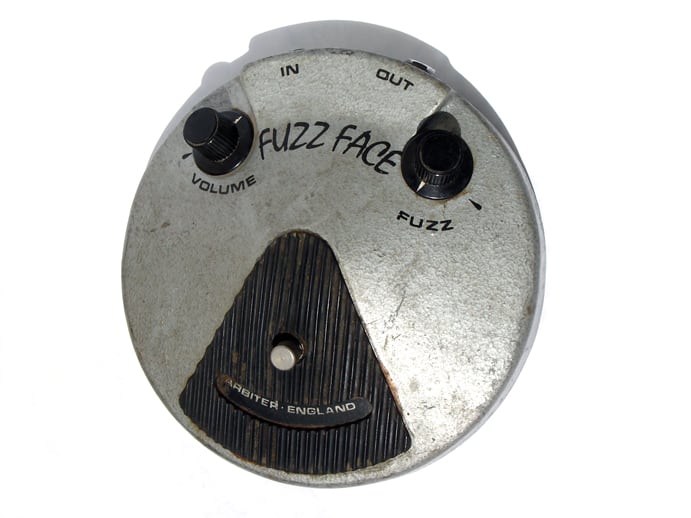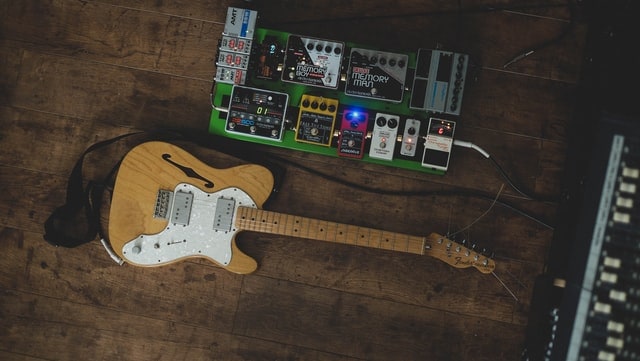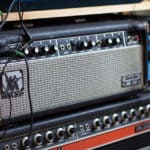Guitar pedals are quite simple. At least most of them.
However, I’d argue they have something that still confuses me to this day.
Something I fail to get right every time I get to mess with them.
And this probably happens to you also because you are here reading this article.
Getting to the point then:
Why do guitar pedals have their inputs on the right and outputs on the left?
The signal runs through guitar pedals from right to left because most guitar players are right-handed and the input jack of their instruments is on the right-hand side. This allows for the cord to go into the first pedal’s input by doing just a small loop, instead of a sharp turn.
In this article, I will try to gather all the reasons why manufacturers decided on putting the connectors of guitar pedals opposite to what reason dictates for many of us.
After leaving this page you will have a clearer idea about how pedals work, and why are designed the way they are, which is not arbitrary at all. It has a purpose.
Are you ready to get started?
Let’s go!
Why does the signal in guitar pedals run from right to left?
The common consensus among players is that the signal runs through guitar pedals from right to left because most players are right-handed and the input jacks on their guitars are on the right.
With the input cable coming from the right side of their bodies, it can naturally flow with a small concave shape into the first input on the right of the first pedal on the pedalboard.
Now, think of the opposite. If most pedals had their inputs on the left, then a right-handed player’s cord leaving the jack of the guitar will have to make a hard turn left, and then a hard turn right when meeting the pedal, ending up with a not-so-healthy “Z” shape for the cable.
This, of course, is not a design that would prevent any tragedy, since left-handed players have to deal with their cables running in awkward manners anyway.
Probably, what happened with pedals is that the industry caught on to this way of doing things at an early point of its existence, and since then this has been the standard from which only a few manufacturers ever deviated.
Is there a benefit for the signal flowing from right to left on pedals?
For right-handed players, the benefit of having cables running from right to left on pedals is mostly avoiding for the cords to get into sharp turns to be plugged in that could end up damaging the wires inside them after prolonged usage.
Also, this design avoids cables to have the tendency to fall over the pedal’s surface when you move to your right from standing in front of the pedalboard.
Probably these benefits are not that big, and for many people might be offset by the confusion it generates to have things running against the reading convention of going from left to right.
But this is how things are, and nobody died of it yet, as far as I know.
Do all pedals have their inputs on the right?
Not all guitar pedals have their inputs on the right.
For instance, the very well-known Fuzz Face pedal has its input on the left.
An urban myth pinpoints this design decision as a request from Jimi Hendrix, a left-handed player because of the cable issues I described above.

True or false? It’s up to you to decide.
Russian Big Muffs are also known to have their inputs and outputs flipped from the standard.
There are probably a lot of other examples out there for this, and even it’s not a hard mod to do on your own pedals if it really bothers you.
Do all pedals have their outputs on the left?
Most guitar pedals do have their outputs on the left to allow for a regular flow of the signal cable from the last pedal in the chain to the amp as most have their inputs on the left of their front panels.
If outputs were on the right, at the end of the chain of pedals, the cord carrying the signal would have to make a sharp turn left to then go straight until it reaches the amp’s leftmost part.
This is a small design tweak for convenience that doesn’t make or break how things work, and that most of us take for granted.
What happens if you mess up your pedal’s inputs and outputs?
The issue with having guitar pedals run right to left is that we are culturally used things to things flowing the opposite way.
I’m writing, and you are reading left to right, aren’t you?
This leads to all sorts of confusion when plugging in a new signal chain, especially if you don’t take the time to test it stage by stage.
Surely it has happened to you at least once, that you end up setting everything up just to turn it all on and not get any sound whatsoever.
The good thing is that the only thing you risk by doing so is just a bit of your precious time.
It’s almost impossible to damage any of your pedals by plugging into them the wrong way.
Usually, with audio gear, the dangers of damage are more present when you mess with powered signals where they don’t belong, and this is not the case.
More on this topic on the following article:

Hello there, my name is Ramiro and I’ve been playing guitar for almost 20 years. I’m obsessed with everything gear-related and I thought it might be worth sharing it. From guitars, pedals, amps, and synths to studio gear and production tips, I hope you find what I post here useful, and I’ll try my best to keep it entertaining also.





